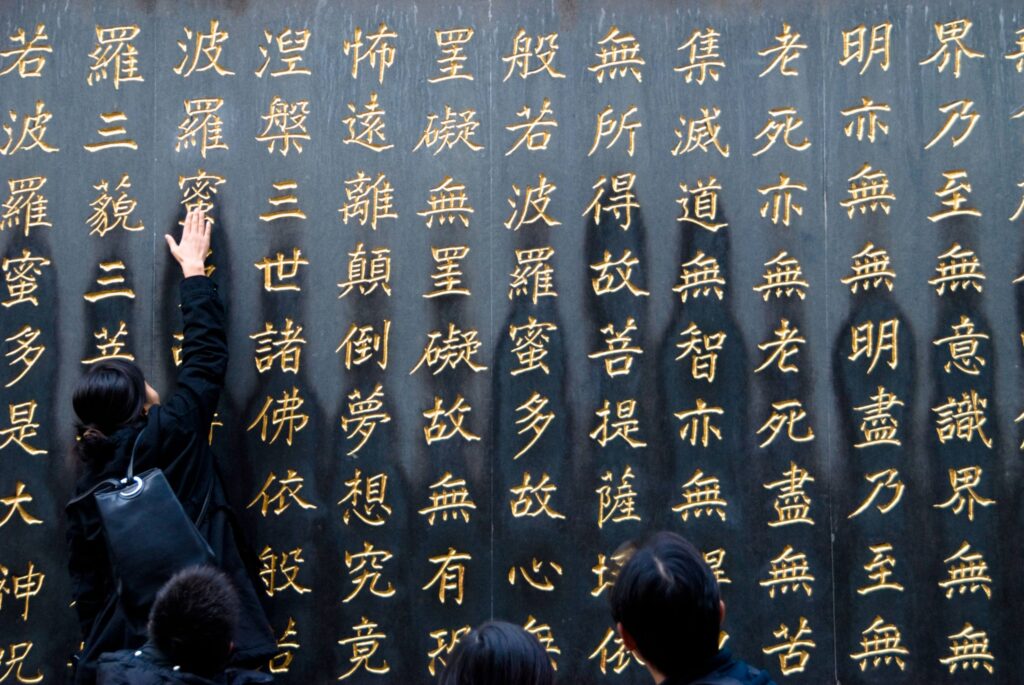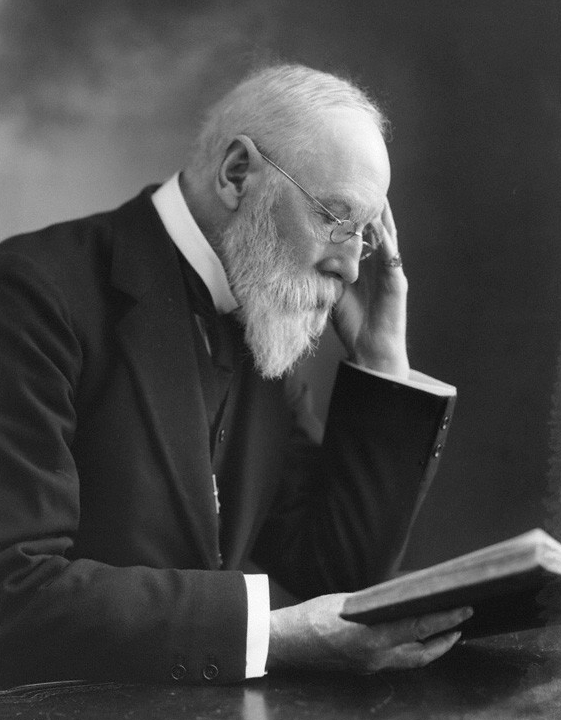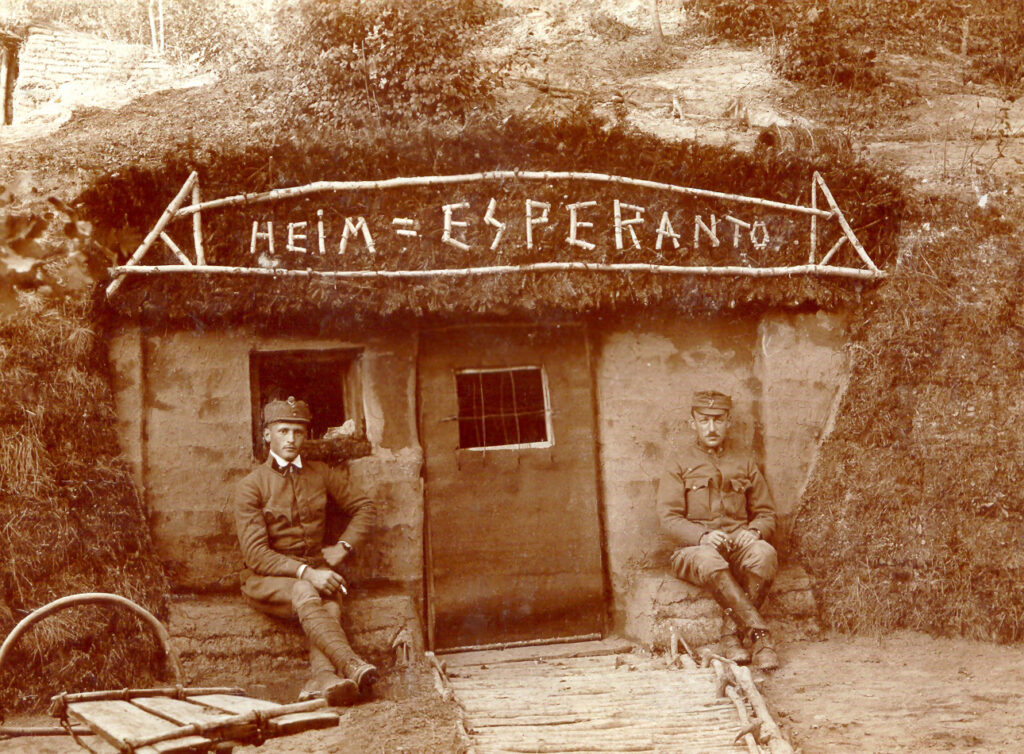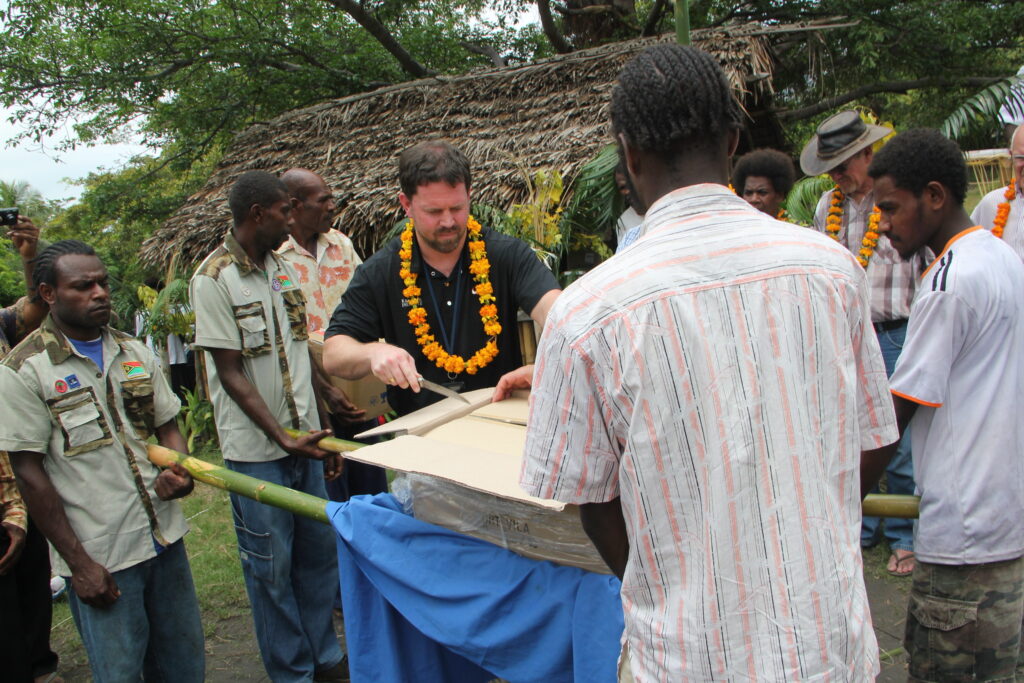Confronter l’impossibilité – et le besoin – de compter les langues du monde
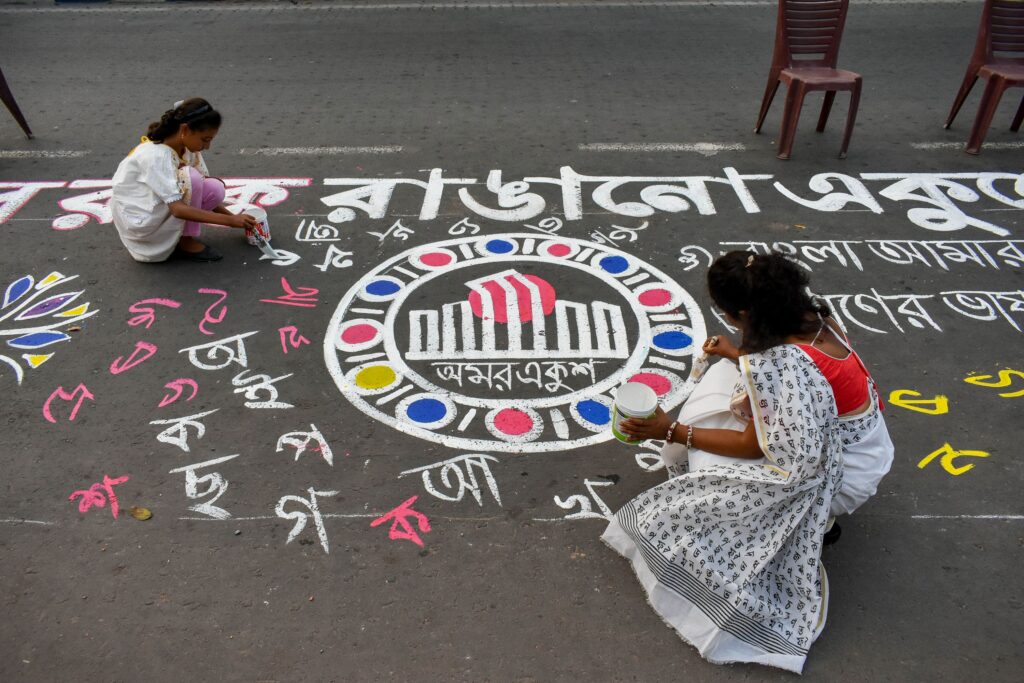
EN TANT QUE CHERCHEUR qui étudie la diversité linguistique depuis une quinzaine d’années, j’ai récemment rejoint une équipe chargée d’une tâche que même certains linguistes considèrent être « en fin de compte irréalisable » : aider à répertorier et à compter les langues du monde, lesquelles sont complexes et en constante transformation. Je fais partie d’une équipe internationale de personnes spécialistes réunies par l’UNESCO dans le but de compiler un Atlas Mondial des Langues. Ce répertoire devrait permettre d’obtenir des estimations actualisées du nombre de langues en activité de même que des informations sur la manière dont ces dernières sont utilisées.
Généralement, lorsque je présente mes travaux de recherche, l’une de mes astuces consiste à commencer par une estimation approximative des langues naturelles utilisées aujourd’hui : entre 7000 et 8000. Mon but est de faire comprendre qu’il existe de nombreuses langues et, par conséquent, une incroyable diversité de formes avec lesquelles les êtres humains pensent, raisonnent, et sentent. Mais établir un nombre de langues plus précis ouvre la porte à toutes sortes de problèmes.
Par exemple, la République Centre-Africaine compte environ 70 langues. Les locuteurs d’un grand nombre de ces langues vivent au cœur de forêts tropicales sans routes, dans des villages de difficile accès pour les représentants du gouvernement et les chercheurs. Il est difficile d’imaginer la demande en ressources qui serait nécessaire pour arriver à dresser un tableau linguistique précis pour ce seul pays.
Bien entendu, notre projet est loin d’être le premier à tenter de catégoriser et de quantifier les langues. Bien d’autres groupes et individus ont entrepris des initiatives similaires dans le passé et continuent de le faire aujourd’hui.
Entreprendre cette tâche m’a conduit à en apprendre davantage sur l’histoire et l’art de compter les langues. Alors que je m’attendais à lire une suite ennuyeuse d’estimations, j’ai découvert une histoire passionnante de missionnaires chrétiens, d’idéalistes de l’après-guerre, d’un agent de l’opium colonialiste, et bien d’autres choses encore. J’ai également développé une plus grande appréciation pour la mission potentiellement impossible de compter les langues.
POURQUOI COMPTER LES LANGUES ?
Chaque année, environ trois langues cessent d’avoir des locuteurs actifs. Cette situation cause des conséquences négatives pour les communautés, notamment la perte de connaissances culturelles uniques. Comme l’a dit le linguiste Kenneth Hale, losing a language is “like dropping a bomb on the Louvre.”
Les chercheurs et chercheuses de même que les institutions et les gouvernements doivent documenter le nombre de langues existantes afin d’élaborer et d’évaluer les politiques visant à améliorer la vitalité des langues en déclin. Il existe également un besoin de traduire des informations pour s’assurer que le plus grand nombre puisse avoir accès à une variété de ressources. Par conséquent, ces entités dépendent d’une image précise du nombre et de la localisation régionale des langues.
En outre, les scientifiques utilisent des statistiques linguistiques afin de comprendre les formes de distribution des langues et des cultures sur le globe terrestre. Leurs recherches ont révélé un certain nombre de parallèles intrigants entre la diversité biologique et la diversité culturelle. Par exemple, les langues semblent suivre la règle de Rapaport, une règle d’écologie qui stipule que l’aire de répartition géographique des plantes et des animaux augmente à mesure que l’on s’éloigne de l’équateur. De même, plus une langue est éloignée de l’équateur, plus l’aire de répartition spatiale de ses utilisateurs est étendue.
L’étude de la diversité linguistique permet également de mieux comprendre la manière dont les langues influencent la cognition. Par extension, cette recherche montre comment la compréhension plus large de champs de connaissance tels que la science, la médecine et la technologie est limitée et biaisée en raison du monopole quasi exclusif de quelques langues qui dominent ces domaines.
LES DÉFIS POSÉS PAR LE COMPTAGE DES LANGUES
Pour qu’un système de communication soit défini comme une langue distincte –et non comme un dialecte ou la variété d’une langue– celui-ci doit être suffisamment inintelligible par rapport aux autres. Il arrive parfois que les frontières entre les langues soient clairement définies, mais à d’autres occasions, elles peuvent être plus floues.
Par exemple, l’accent, le vocabulaire, et la grammaire de l’anglais parlé à Chicago, Belize City, Glasgow, Mumbai, Nairobi, et au Cap présentent de nettes différences. Pourtant on les classe généralement comme des variétés de l’anglais car, à priori, leurs locuteurs parviennent à se comprendre. Mais des mises en garde sont nécessaires. Il peut arriver que deux personnes locutrices et de langue maternelle anglaise venant de pays différents aient des difficultés pour se comprendre.
Selon une règle souvent évoquée, si les personnes locutrices de deux systèmes de communication différents parviennent à comprendre 70 pourcents ou plus de ce que l’autre dit, elles parlent deux variétés de la même langue plutôt que deux langues distinctes. Mais même cette règle peut être sujette à caution.
Prenons l’exemple de la Coupe du Monde masculine de la FIFA 1986 au Mexique, qui a été marquée par le but le plus incroyable de l’histoire du football (ou «soccer», selon la variété de français que vous parlez). Plusieurs chaînes de télévision brésiliennes ont doublé les matchs en portugais. D’autres ont laissé les interviews des joueurs et les communications officielles dans leur langue d’origine, l’espagnol.
Des chercheurs ont estimé que les personnes locutrices du portugais du Brésil comprenaient environ 60 pourcents de l’espagnol. Mais ce chiffre était basé sur la compréhension par des étudiants et étudiantes universitaires de textes comportant un nombre insuffisant de genres littéraires et de variétés d’espagnol. On peut facilement imaginer des scénarios dans lesquels ce pourcentage tomberait à presque zéro – par exemple si une personne locutrice du portugais non spécialisée écoutait quelqu’un lire un article scientifique sur la théorie des cordes en espagnol.
En revanche, la communication dans le domaine des sports a tendance à être stéréotypée (« nous avons fait un bon match » ; « l’autre équipe était coriace ») et à s’appuyer sur des indices visuels qui aident à transmette le sens. On peut donc supposer qu’un bon nombre de personnes du Brésil regardant la Coupe du Monde de 1986 en espagnol ont compris bien plus que 70 pourcents de la transmission. Cet exemple illustre les complications liées à l’utilisation d’un seul chiffre pour estimer l’intelligibilité des langues.
Des questions politiques entrent également en jeu lorsqu’il s’agit de demander aux communautés ou aux pays de codifier les langues. Selon la volonté politique, deux langues très intelligibles entre elles peuvent être traitées comme des entités séparées d’un côté ou de l’autre des frontières entre les pays et les états. Les exemples classiques de ces cas sont l’indonésien et le malais standard, le dari et le persan, et le bosniaque-croate-monténégrin-serbe, lequel a perdu ses traits d’union après la guerre des Balkans dans les années 1990, donnant naissance à deux ou quatre langues, selon les personnes à qui vous demandez.
Inversement, certaines formes de chinois parlé, notamment le mandarin et le yue, ne sont pas mutuellement intelligibles. Cependant, elles sont souvent considérées comme des variantes ou des dialectes du chinois plutôt que comme des langues différentes en raison du du sentiment relativement fort d’identité ethnolinguistique, du patrimoine culturel commun et du système d’écriture largement compris de la Chine.
Demander à des personnes individuelles de distinguer les langues peut également s’avérer délicat du fait des notions différentes par rapport à ce qui constitue une langue, qui devrait parler quelle langue, et d’autres considérations éthiques. De nombreux témoignages rapportent que des personnes nient connaître une langue et par la suite la parlent couramment avec leurs pairs sous le regard perplexe d’une personne linguiste.
Il existe également des cas contraires. En Polynésie française, Pierrot Faraire est considéré comme la principale référence vivante de la langue rapa, laquelle a été remplacée par le tahitien et le français. Mais les témoignages des anciens et des anciennes, de même que des preuves documentaires, en disent autrement : son rapa serait en grande partie une nouvelle invention.
Il ne s’agit là que d’une description superficielle de quelques-uns des problèmes que pose le comptage des langues. Mais le message est clair : la délimitation des langues n’est pas qu’un simple exercice scientifique ou technique, et il y a beaucoup de place pour les opinions et les parti pris. Par conséquent, prétendre connaître avec précision le nombre de langues existantes peut être considéré comme un acte d’érudition extraordinaire – ou comme de la folie. Ou les deux. Mais cela n’a pas empêché les gens d’essayer.
COMPTER LES LANGUES POUR LES COLONIALISTES ET LES SOCIÉTÉS HORLOGÈRES
Si l’on fait abstraction des quelques premières tentatives documentées de description des langues mondiales connues, les premières initiatives à utiliser un nombre considérable de ressources visant à dénombrer et cartographier les langues ont eu lieu à la demande explicite des administrations coloniales à la fin du XIXème siècle et début XXème.
L’exemple le plus connu de ces projets est sans doute la collecte linguistique Linguistic Survey of India, au cours de laquelle un réseau colossal de fonctionnaires a été mis en place dans tout le pays. Son concepteur principal, Sir George Abrahams Grierson, était l’un des agents de l’Empire britannique chargés de l’opium en Inde (il était également linguiste, bien que ce détail sur sa vie soit beaucoup moins surprenant). Il s’attendait à ce que cette initiative dure trois ans. En réalité, l’enquête a duré près de 30 ans, et n’a pas été sans faille.
Le premier effort à grande échelle ayant pour but la standardisation des noms de langues du monde date de la période de l’après Seconde Guerre Mondiale. En 1947, l’ Organisation Internationale de Normalisation fut fondée avec le souhait de créer des normes applicables à l’échelle mondiale dans les domaines de l’ingénierie, de la mesure, et bien d’autres. Cette tâche devenait particulièrement urgente dans un contexte d’américanisation imminente et au vu des efforts pour régénérer le commerce international. La nature démocratique et égalitaire de cette organisation était gravée dans son nom abrégé : ISO. Bien qu’il puisse sembler être un acronyme, ce nom regroupe en fait les premières lettres de l’organisme tout en rappelant le mot grec pour « égal », isos.
En 1967, l’organisation finalisa l’élaboration de la norme ISO 639. Son but consistait à simplifier la communication entre les experts internationaux dans les domaines de la science et de la technologie. Il s’agissait donc moins de célébrer la diversité linguistique de la planète et davantage de créer des codes pratiques d’une à deux lettres pour les langues (tels que E pour l’anglais, F pour le français, et Zu pour le zoulou) qui pourraient être utilisés, par exemple, dans des documents lors de conférences. La norme ISO 639 fournit la situation hypothétique suivante pour justifier de l’utilité de ses codes de langues :
Une illustre société horlogère joint à son catalogue en cinq langues une introduction dans une seule des cinq langues, selon la demande de la personne à qui il est destiné. Ces introductions interchangeables sont maintenues par des bandes qui ne sont marquées que par l’une des cinq lettres E, F, D, I ou S.
Le choix d’une « illustre société horlogère » comme exemple principal semble beaucoup moins étrange si l’on prend en compte que ces réunions de l’ISO avaient lieu à Genève, en Suisse.
L’ISO a créé des codes pour un total de 183 langues. Parmi celles-ci, les langues construites que sont l’espéranto, le volapük, l’interlingua et l’ido constituent peut-être les plus remarquables. À l’époque —alors que les pertes humaines gigantesques causées par la Seconde Guerre mondiale étaient encore présentes dans les esprits—, l’idée que les êtres humains devaient établir une langue commune avait plus de sens qu’aujourd’hui, dans un contexte où l’anglais s’est battu (parfois littéralement) pour parvenir au statut de lingua franca mondiale.
Faisons un saut dans le temps jusqu’à 2007 : l’ISO a maintenant documenté plus de 7500 langues, y compris des langues anciennes et des langues qui ne possèdent plus de locuteurs et locutrices aujourd’hui. Pour élaborer ce répertoire, l’ISO a uni ses forces à une initiative indépendante dont le but est de nommer et comptabiliser les langues du monde : Ethnologue, laquelle a également une histoire particulière.
RÉPANDRE L’ÉVANGILE DANS TOUTES LES LANGUES
L’histoire d’Ethnologue commence avec un missionaire : William Cameron Townsend.
En 1918, Townsend prêchait l’évangile dans les hautes-terres du Guatemala. L’institution religieuse à laquelle il était affilié avait établi un plan de conversion en espagnol. Mais les populations autochtones de la région parlaient plusieurs autres langues. Townsend se lia au peuple Kaqchikel, apprit leur langue, et 14 ans plus tard, il finalisait la première traduction du Nouveau Testament en langue kaqchikel.
Au cours de ce processus, il fonda le Camp Wycliffe, un nom choisi en hommage à l’un des premiers traducteurs de la Bible en anglais. Ce camp offrait aux jeunes missionnaires um cours intensif de documentation linguistique. Peu de temps après, Townsend abandonna la plupart des symboles religieux et du bagage historique, redéfinissant les efforts de l’organisation dans l’optique de contribuer aux causes scientifiques et humanitaires.
Cette stratégie permit à Townsend et aux personnes qui lui succédèrent d’accéder à des lieux et des langues qui auraient été impénétrables pour les missionnaires chrétiens traditionnels. Dans le cadre de cette démarche, il rebaptisa le Camp Wycliffe le Summer Institute of Linguistics [Institut Linguistique d’Été], un nom dépourvu de connotations chrétiennes. Désormais connue sous le nom de SIL International, cette institution gère Ethnologue.
Au cours des deux dernières décennies, Ethnologue a été de facto la principale référence pour nommer et compter les langues, déterminer le nombre de locuteurs de chaque langue, et (bien que de manière controversée) évaluer le degré de vitalité des langues. Les gestionnaires d’Ethnologue n’hésitent pas à l’affirmer. Dans sa 25ème version en ligne, Ethnologue revendique le statut de « ressource la plus fiable sur les langues du monde, à laquelle se fient aussi bien les universitaires que les entreprises du Fortune 500 ». Je ne prétends pas m’y connaître en stratégies publicitaires, mais je suppose qu’il peut être intéressant de savoir que l’on possède les mêmes références de connaissances linguistiques que les entreprises John Deere et Foot Locker.
Les linguistes s’appuient également sur SIL pour leurs recherches, comme par exemple pour trouver des contacts dignes de confiance ou pour obtenir des logiciels adaptés à leur travail de terrain. Cependant, la mission principale de SIL International reste la traduction de la Bible. Cette tâche peut parfois aller à l’encontre de la préservation de la diversité linguistique. La propagation de la Bible met l’accent sur la lecture au détriment des traditions orales qui sont essentielles pour certaines communautés. La traduction de la Bible dans une variété de langue d’une région donnée peut lui conférer un prestige supplémentaire, au détriment d’autres langues de la localité.
L’AVENIR DU COMPTAGE DES LANGUES
À l’heure actuelle, il existe peu de véritables alternatives à Ethnologue. La plus connue est peut-être Glottolog. Cette base de données en ligne est gratuite grâce au soutien du département d’évolution culturelle et linguistique de l’Institut Max Planck d’Anthropologie Évolutive, basé en Allemagne. Glottolog affirme être un « catalogue complet » et promet que « toute variété sur laquelle travaille une personne linguiste devrait un jour avoir sa propre entrée ».
Ce “un jour” a son importance. Glottolog est géré par quelques linguistes qui alimentent le site par passion. Cet exploit mérite d’être salué, mais ce n’est pas la solution la plus durable. Les décisions de Glottolog sur ce qui est considéré comme une langue et comment les langues sont liées les unes aux autres sont basées sur la « meilleure estimation des gestionnaires de Glottolog ». Il n’y a pas de trace écrite indiquant comment chaque décision a été prise, mais le site reconnaît que plus de 250 personnes « ont fourni des informations pour confirmer et/ou clarifier » celles-ci.
Un avenir incertain se profile au cas où les personnes de la rédaction de Glottolog se trouvaient dans l’impossibilité de continuer ce travail. Il s’agit là d’une préoccupation constante du fait de la rareté des financements disponibles pour de telles activités.
Compte tenu des défis d’ordre technique, conceptuel, éthique, et financier liés à la création des compilations de langues, il n’est pas surprenant que certaines personnes pensent que cette tâche est en fin de compte inutile. Lors d’une conférence en 2013, les linguistes Stephen Morey et Mark Post ont affirmé que les tentatives de normalisation de la diversité linguistique étaient « vouées à l’échec » du fait de la nature dynamique des langues. Celles-ci ne se comportent tout simplement pas comme nous le souhaiterions.
Je ne suis pas totalement insensible au sentiment exprimé ici. Mais je me demande ce que serait notre compréhension collective de la diversité linguistique sans ces inventaires limités et imparfaits.
Comment pourrions-nous savoir que la population de plus de 12 millions d’habitants de la Nouvelle Guinée est locutrice de plus de 800 langues, alors que celle de l’Europe, estimée à 750 millions, n’en parle qu’environ 200 ? De quelle autre forme aurions-nous reconstitué l’histoire culturelle de lignées humaines entières et les fragments de vocabulaires anciens ? Et comment pourrions-nous suivre la trace et potentiellement renverser la tendance de perte linguistique au niveau mondial si ce n’est en continuant à compter les langues, même si elles ne se comportent pas comme nous le souhaitons ?
































